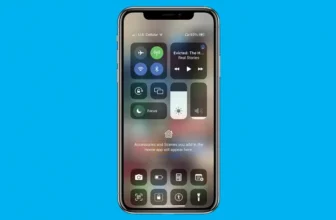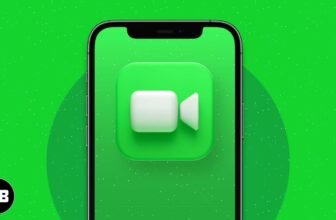iPhone X Review by Marques Brownlee
Hey, what’s up guys, MKBHD here, and this is the iPhone X. There’s no doubt that this thing is iconic in the history of iPhones. It’s more modern, and it finally feels like the new iPhone, that’s a big part of why I like it so much.
The Learning Curve
There’s a learning curve to this phone, unlike any other iPhone. Every other iPhone ever has just been a home button, rectangle, screen, rounded corners—pretty much the same thing. You know what you’re getting yourself into, you know exactly how to use it, and if there’s maybe one big new feature every year, it takes you two seconds to learn it and you’re good.
iPhone X is different. With this phone, there are maybe three or four big fundamental changes to how you use it. Now it’s very clearly still an iPhone; you still mostly know how to use it, but there are a couple of things that are different that you’ll have to get used to.
Design and Display
On the outside, it’s the shape we’re used to—the rectangle with rounded corners—but this is the first time the display itself actually has curved corners, and it’s pushed right up to the edges of the phone, or at least closer than they’ve ever been. The commercials make it seem a little more dramatic than it actually is, but hey, it’s 2017, and phones have small bezels—that’s just the way they are now. So in that way, the iPhone catches up. It pushes everything to the corners and keeps all the front-facing sensors in the notch, that forsaken notch at the top.
It’s actually not that big of a deal, but we’ll get into that soon. Just holding the phone, though, it feels great. I think it’s an awesome size, but if there were a bigger iPhone X Plus, I would totally get that.
Right now, despite the larger display, the X is definitely closer to feeling like an iPhone 8 than an 8 Plus. It still feels like a smaller phone compared to the others I’ve used. Also, thanks to the stainless steel sides, it’s slippery and it’s definitely going to slide out of your pocket at least once.
It happens to the best of them. And it’s crazy, the silver is so shiny. Honestly, we all know your phone is never going to look as good as it does fresh out of the box.
Unlike the more matte finish of the previous iPhone, I’m not convinced this super shiny finish on the iPhone’s rails is going to last like this. We’ve seen this before on other products—it definitely gets chipped and scratched. You probably already know, I usually go for a matte black skin here, which not gonna lie, still looks pretty good.
Accessories and Build Quality
But the brand’s got something new for the X: the grip. As the name implies, this thing is supposed to be the best way to grip your phone. Look for a full review of this bumper later this month, but I’ll leave a link below if you want to check this one out.
A lot of people were asking about it when I showed it in my Instagram story. But overall, it’s a pretty complete hardware package, as you’d expect from a $1000 smartphone. The speakers, even though they aren’t front-facing, are still pretty good.
It’s water-resistant, which gives you some nice peace of mind. It has wireless charging. There’s no headphone jack—welcome to 2017. But overall, it’s well-considered and well-put together. Is it now officially the most breakable iPhone ever, thanks to having glass on the back? Yes.
The one part of the hardware of this phone I don’t like is the camera bump, but not just for the usual reason, like rocking on a table—I’ve just kind of accepted that at this point. But because of the new orientation, a couple of times I’ve noticed it’s easy to accidentally get your finger in the photo or video you’re taking, just because it’s all up in the corner.
It might take a couple of days to get used to that and stop getting your finger in the corner of your shots. But what’s really become the signature feature of the iPhone X is around the front, and it is that notch up at the top of the display. There are two camps with this.
The Notch Debate
Number one is, I hate it, it’s ugly, I wish it wasn’t there. And number two is, I actually don’t notice it anymore. And just like with the Essential phone, I tend to fall more in camp number two.
When you want to make a 2017 phone, and you want to shrink the bezels, you still have to put all the front-facing sensors, all of the cameras, and the IR blaster, and the depth sensor—you have to put that somewhere. In 2017, some manufacturers keep a smaller traditional bezel to house it, some try to go no top bezel and put everything in the chin, and some try to minimize all the bezels and use a sort of cut-out notch. Apple has decided to go with a notch.
And I don’t mind it. In fact, I literally don’t even think about it anymore in everyday use. Now, obviously, when you’re focusing on it here as I’m talking about it and highlighting it on video, it’s really obvious. You know, the unibrow at the top—it kind of just becomes a part of this iPhone X’s character, but you’re never really looking at it during normal use.
Like flipping through apps, scrolling through Twitter, Instagram, whatever, it disappears pretty quickly. Now, not everybody feels this way, clearly. I’ve seen all the clever “hiding the notch” stuff, all the apps and the wallpapers, and that.
I get that. But because this is Apple, and because they’re stubborn and will never admit that any of their solutions are anything other than perfect, they’ve come up with the opposite solution, which is “embrace the notch.” So in all their software and all the software they’ll promote, it’s apps that wrap right around that notch and fill up the whole display.
App Optimization
That’s what an optimized iPhone X app looks like. And since this is a taller aspect ratio, apps will have to get updated to do this. Developers will have to get on their horse and actually put in the work and update their apps to get them to fill up the display like this.
To be fair, most of the big-name apps are already upgrading and embracing the notch like Apple wants, but there are still plenty that haven’t updated yet. They’ll be obvious when you see them because they’ll have these big bezels at the top and the bottom, kind of like you’re using them on an iPhone 8 again. So slowly, over the next couple of weeks and months, all the apps you’re using will get updated to embrace that notch, whether you like it or not.
It just takes some time. This is probably the biggest change developers have had to make to their apps for a new iPhone since the beginning. For the record, the only time I really think about that notch is when I’m watching videos.
Video Viewing Experience
Yes, it gets kind of awkward here because when you’re watching videos fullscreen, the notch will cut off some of the display, some of what you’re trying to watch. If you want to avoid that, you can actually double-tap and it’ll bring in the video you’re watching on this OLED display. Now you have some more bezels.
But at this point, now the video you’re watching is so small, you might as well not be watching it on a bigger screen. It feels like the same size as the iPhone 8. This whole thing is the main reason why I would actually want a plus-sized iPhone X.
Display Quality
As for the rest of the display, it’s great. Apple calls it a Super Retina display. I just call it their first OLED in a smartphone ever—finally. And it’s pretty awesome. It’s a 5.8-inch panel, high pixel density.
It supports the P3 color gamut, HDR. It has True Tone. It doesn’t get as bright and saturated as Samsung’s Note 8 and S8 displays, but it is still bright enough.
Not too cartoonish with the colors. It has a small blue shift when you tilt it off-axis, but so do many other OLEDs to varying degrees. And it still has 3D Touch, although I pretty much stopped using that completely except for lock screen controls that I wish I could change.
The screen is awesome, and it’s a big part of why this phone looks so good from so many angles. Good job, Samsung.
Gesture-Based Navigation
Now, of course, when you go to a full-screen display like this, you lose the Home button. So that’s why iPhone X replaces that Home button with a whole bunch of gestures. This is the biggest learning curve of any iPhone ever, but it’s still not that bad. You swipe up from that bar at the bottom of the screen at any time to go Home now.
Anytime you see that bar, it represents Home, and whatever app you’re in will close itself just like any other iPhone when hitting the Home button. Swipe down from the top for notifications, but now swipe from the right corner for your Control Center. For multitasking, again, you have no Home button, so you swipe halfway up and then over to get through your recent apps.
That’ll get you to that same card-style carousel as before. But overall, once you get a hang of this system, once you get used to all this swiping, which took me a couple of days, it felt pretty natural. I started trying to swipe up on other phones, which shows you how weird, how much I got used to that.
Face ID: The Future of Authentication
With the Home button gone, Face ID replaces Touch ID. Face ID works well most of the time, although not as flawlessly as Touch ID. It uses infrared dots to map your face, allowing it to recognize changes like haircuts or makeup. However, it can be blinded by intense infrared light from the sun. While not perfect, Face ID has a high success rate and will likely improve with software updates.
Animoji Fun
Animoji, one of the most fun features of the iPhone X, uses the front-facing camera to track your facial movements, creating animated emojis. Despite being exclusive to the iPhone X, Animoji works with just the front-facing camera, indicating it could potentially be available on other iPhones. Nonetheless, it’s a unique feature that showcases the iPhone X’s advanced technology.
Camera Improvements
The iPhone X’s cameras are slightly upgraded from the iPhone 8 Plus, with both rear cameras now optically stabilized. This results in better performance for zoomed-in photos and videos. The dynamic range is impressive, with vibrant colors and detailed images. While not as good as the Pixel 2’s camera, the iPhone X’s camera ranks among the top five smartphone cameras.
Front-Facing Camera and Portrait Mode
The front-facing camera supports portrait mode for selfies, though it doesn’t perform as well as the back camera or the Pixel 2. However, with better color accuracy, it has the potential to improve with software updates.
Specifications and Performance
Powered by the A11 Bionic chip and 3GB of RAM, the iPhone X is incredibly powerful, with impressive benchmarks. This power supports augmented reality apps, advanced image processing, and super slow-motion video. Despite its modern feel with new gestures, iOS on the iPhone X remains familiar, with all its features and quirks.
Battery Life
Battery life on the iPhone X is excellent, comparable to the iPhone 8 Plus. It handles the large OLED display efficiently, offering around six hours of screen-on time.
Final Thoughts
The bottom line is that the iPhone X is my favorite iPhone ever. Is it worth $1000? For those who buy it, I believe it will be worth it. Despite its downsides, like the glass back and the notch, these are expected trade-offs for a phone of this caliber in 2017. If you’re considering getting this phone, I think you’ll be happy with it.
Until the next one, this has been MKBHD. Thank you for reading, and talk to you in the next one. Peace.





